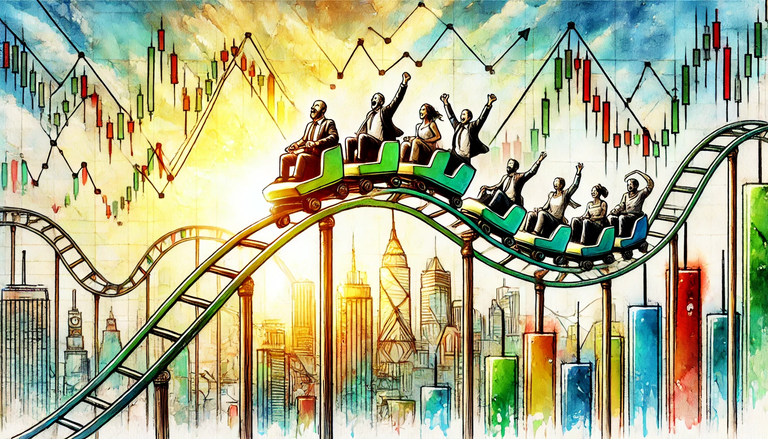
The Emotional Rollercoaster of Investing
In the fast-paced world of investing, it's easy to get caught up in the daily swings of the market. One day, you're riding high on a wave of optimism, and the next, you're plunging into the depths of despair. But as seasoned investors know, success in this field isn't just about numbers and charts – it's about mastering the psychology of the market.
The Sentiment Seesaw
Recently, I came across an interesting observation from a fellow investor. They pointed out the irony of how some bulls are now mocking long-time bears, confidently predicting a new bull market based on historical patterns. Meanwhile, the overall market sentiment seems decidedly bullish.
This scenario perfectly illustrates the constant tug-of-war between different market sentiments. It's a reminder that the market is not just a collection of stocks and bonds, but a reflection of human emotions and behaviors.
The Danger of Certainty
One of the key takeaways from this observation is the danger of being too certain about future market movements. As the commenter wisely noted, "Whenever someone is certain about the future, that's usually when they get burned."
This rings true for several reasons:
Markets are inherently unpredictable: No matter how much analysis we do, there's always an element of uncertainty in market movements.
Overconfidence can lead to poor decisions: When we're too sure of our predictions, we might take on more risk than we should.
The market has a way of humbling even the most experienced investors: Just when you think you've got it all figured out, the market can throw you a curveball.
Lessons for the Wise Investor
So, what can we learn from this? Here are a few key takeaways:
1. Embrace Uncertainty
Instead of trying to predict the future with certainty, embrace the uncertainty of the market. This doesn't mean you shouldn't do your research or have a strategy. Rather, it means being flexible and ready to adapt when things don't go as expected.
2. Be Aware of Market Sentiment, But Don't Be Ruled by It
It's important to keep a finger on the pulse of market sentiment, but don't let it dictate your every move. Sometimes, the best opportunities come when you're willing to go against the crowd.
3. Maintain a Balanced Perspective
Avoid falling into the trap of extreme bullishness or bearishness. The reality is often somewhere in the middle. By maintaining a balanced perspective, you're less likely to be caught off guard by market shifts.
4. Focus on the Long Term
While short-term market movements can be exciting (or terrifying), successful investing is often about playing the long game. Keep your focus on your long-term goals and strategy.
5. Diversify
As the old saying goes, don't put all your eggs in one basket. Diversification remains one of the most effective ways to manage risk in your portfolio.
The Human Element in Investing
At the end of the day, investing is as much an art as it is a science. It's about managing not just your money, but also your emotions. The most successful investors are often those who can keep a cool head when others are losing theirs.
Remember, it's okay to be excited about potential opportunities or concerned about possible risks. But it's crucial to balance these emotions with rational analysis and a long-term perspective.
As we navigate the ups and downs of the market, let's strive to be humble in our successes and resilient in our setbacks. After all, in the world of investing, the only certainty is uncertainty itself.